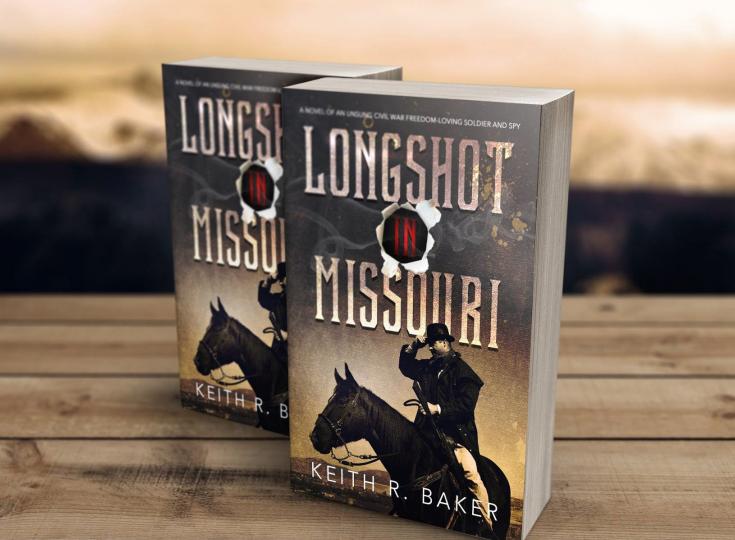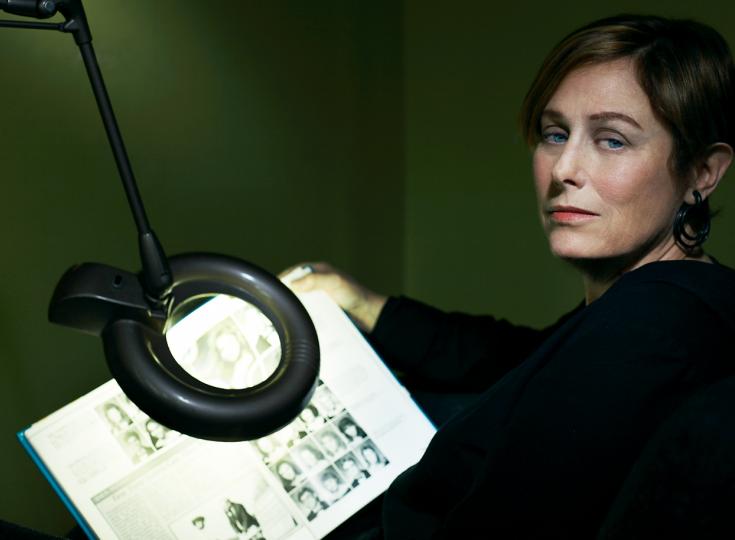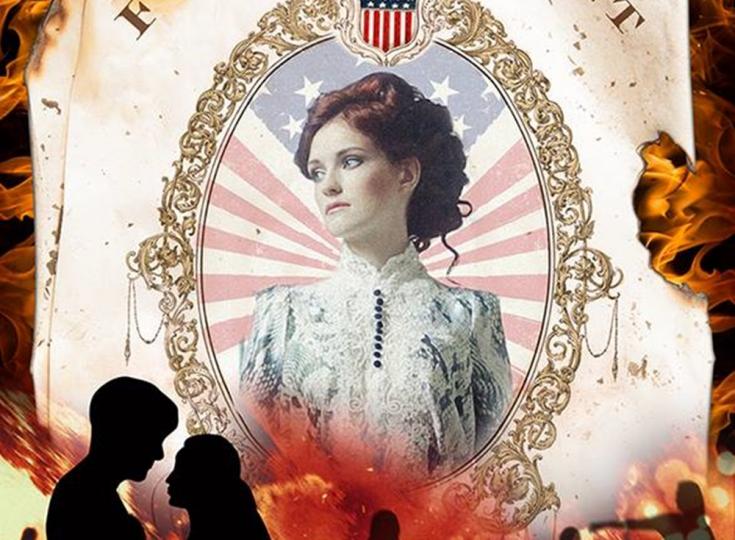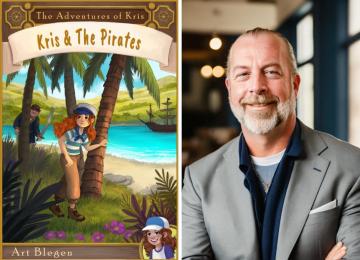Brenda Gayle - Mysteries Featuring a Reporter With a Nose for Trouble
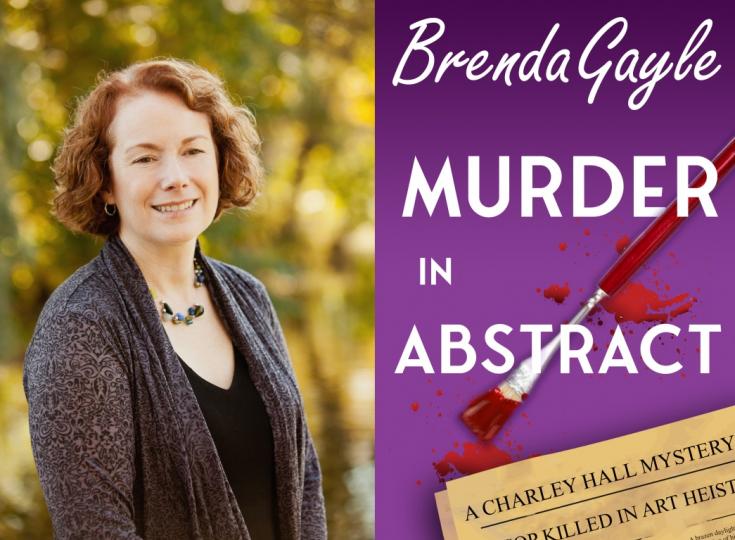
Life is messy and Brenda Gayle tries to reflect that in her stories while still leaving readers with a feeling of hope. She wants them to see themselves and people they know in her characters. Brenda claims writing is in her genes. Her paternal grandmother was a formidable diarist; her father was a journalist and poet; her sister and cousin are both published authors; even her son has shown a talent for putting pen to paper (or fingers to keyboard) to tell awesome stories. So, it came as no surprise to anyone when Brenda returned to her love of fiction after more than 20 years in the world of corporate communications–although some might argue there was plenty of opportunity for fiction-writing there, too. Whether it’s romantic suspense, women’s fiction,or mystery—Brenda's greatest joy is creating deeply emotional books with memorable characters and compelling stories. As our Author of the Day, she tells us all about her latest book, Murder in Abstract.
Please give us a short introduction to what Murder in Abstract is about.
Murder in Abstract is the fifth book in my Charley Hall Mystery series.
1949: Kingston, Canada—Reporter Charley Hall longs to keep her independence. Juggling expectations to remarry and have children with her demotion to the women’s page, the thirty-year-old widow struggles to nab stories that interest her. But the home art exhibition she’s covering turns explosive when two different gangs of thieves pilfer the paintings, leaving one of them dead at the scene.
Joining forces with sometimes-rival cop-turned-PI Mark Spadina, the former city-beat journalist finds a motive for stealing an unknown artist’s work elusive. But when the painter’s dark secret comes to light, Charley discovers there’s much more at stake than armed robbery.
Was there something in particular that inspired Murder in Abstract?
My daughter is completing her master’s degree in Art History at Queens University, in Kingston, Ontario. She has shared a variety of salacious tidbits about some famous artists and their paintings, so I guess my ears tend to prick up when I hear of thefts and scandals in the art world—and there have been a bunch recently. I thought such a theft would be a fun premise for Charley’s next adventure. And it was.
Why did you pick 1949 Kingston, Canada as the backdrop for your story?
The period immediately after World War II was a time when society was just on the verge of tremendous upheaval. On the one hand, you had people yearning to return their previous lives after years of sacrifice and loss; and on the other—for women, especially—you had a group who didn’t want to give up the freedom and autonomy they’d experienced. Women who had stepped up to fill the necessary jobs left vacant by men who had left to fight for their country were now being told to make way for returning soldiers. It was the quiet before the storm—a time when the pressure was building but hadn’t yet exploded.
Kingston is just a few hours south of where I live. It’s a lovely town at the eastern end of Lake Ontario, just at the mouth of the St. Lawrence River. It was, for a short period (1841-1843), the capital of Canada (which was a colony of the British Empire until 1867). It has Fort Henry (a military fort built in 1812), Royal Military College (established 1874), Queens University (established 1841), Kingston Penitentiary (opened in 1835 and in operation until 2013—an excellent tour, if you get the chance, given by former guards), the Prison for Women (opened in 1934 to take the female offenders that were being housed in Kingston Penitentiary, across the street.), Rockwood Asylum for the Criminally Insane (built in 1858 by convicts from Kingston Pen), as well as several hospitals. With so many possibilities, who could resist?
Tell us more about Charley Hall. What makes her so special?
Thirty-year-old Charley Hall (née Charlotte Stormont) has a foot in each side of the changing society. She firmly believes she is “enlightened,” and rails against social injustice. However, she is also a product of her class and doesn’t always see the injustices in her own backyard.
Charley was born into a wealthy entrepreneurial-class family shortly after World War I. Her parents died when she was a toddler, and she was raised by her paternal grandparents. Her grandfather made his fortune as a newspaper publisher at the beginning of the 20th Century but had to sell it during the Great Depression of the 1930s. Her grandmother was a suffragette, although her commitment to women’s rights doesn’t extend much past securing them the vote. Charley has an older brother, Freddie, who is a sensitive soul and having trouble dealing with the horrors he experienced during his time in a WWII German POW camp. She married her brother’s best friend, Theo, just at the start of the war but he has been MIA since the Dieppe raid of 1942.
During the war, Charley convinced the editor of her grandfather’s former newspaper to hire her, and she worked as a city & crime reporter. After the war, she was moved to the women’s page so a returning soldier could take her position. She deeply resents this, believing women should be judged on merit, not their gender.
What, would you say, makes Charley and Mark such a mean team?
Mark Spadina is a big-city cop Charley meets in book 1, A Shot of Murder. He claims he’s come to Kingston on a case, but she discovers he’s actually AWOL and pursuing his own agenda. He stays in Kingston, becoming a private detective.
Mark has had a completely different upbringing from Charley’s. He was born to a prostitute and raised in an orphanage. He is the one who holds up the mirror to Charley, challenging her biases and making her question her beliefs. It’s a prickly relationship, one that Charley isn’t always comfortable with.
Besides writing, what other secret skills do you have?
Back in the good old days (before kids) I used to be quite crafty. Now that they’ve grown and left home (for the most part) and with this darn pandemic making us stay home, I’ve started knitting again. It’s been probably fifteen years since I picked up the needles, but I am amazed by how quickly and easily it all came back to me. Now, when I want to unwind, I’m a knitting machine.
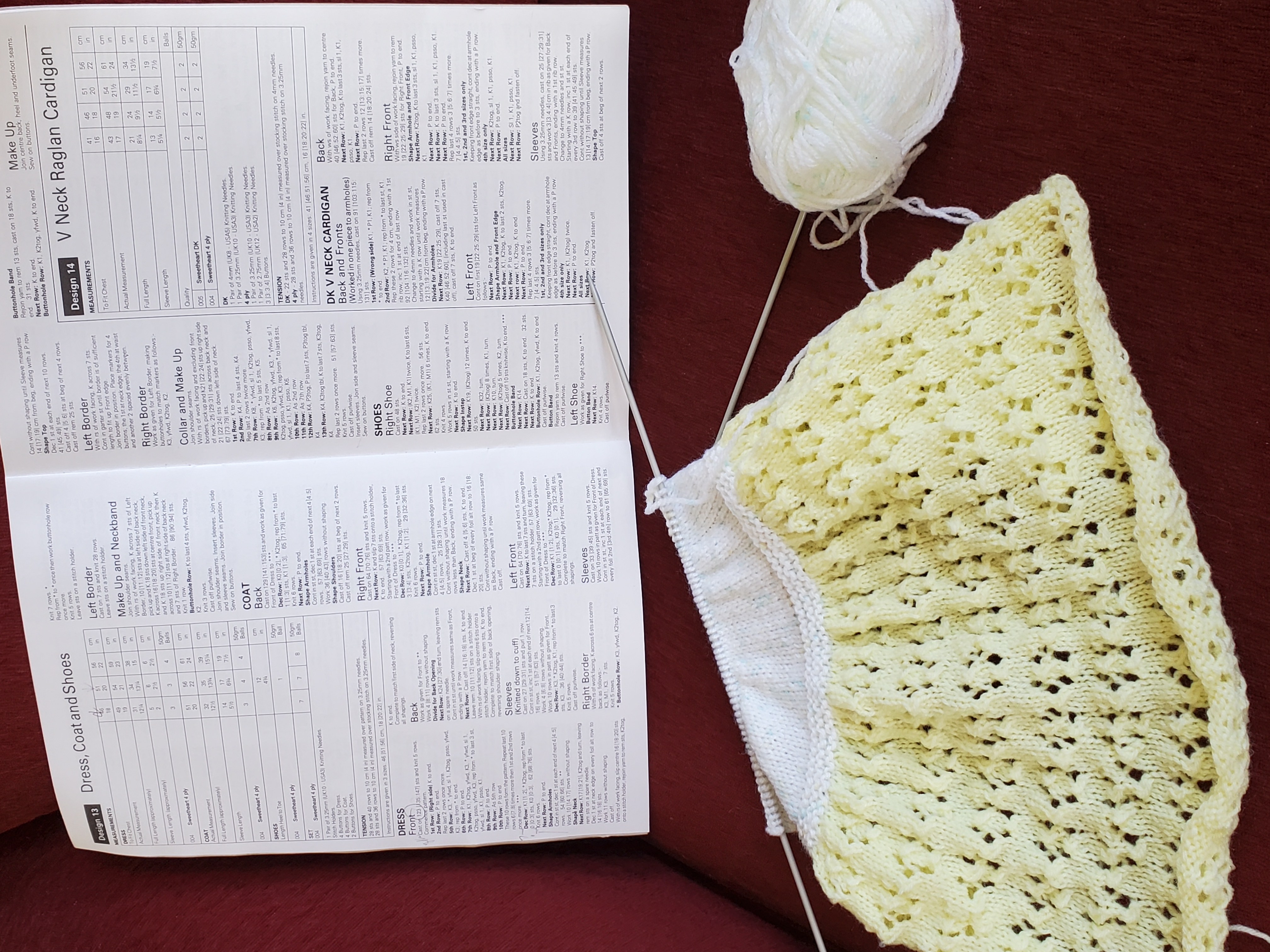
This is the 5th book in the Charley Hall cozy mystery series. Can it be read as a standalone? How do the other books in the series tie in with this one?
Each book in the Charley Hall Mystery series involves a separate crime that is completely resolved by the end, so yes, in that sense, the books can definitely be read as a standalone. But like many series, much of the enjoyment comes from really getting to know and understand the various characters—their likes, their dislikes, their quirks—and so I think there is greater enjoyment to be had from reading all the books. But then, I’m the author, so I would say that, wouldn’t I?
Why cozy mysteries? What drew you to the genre?
When I started writing fiction, it was in the romance genre, but even then, my stories had elements of mystery and suspense. I just didn’t seem to be able to write a pure romance. What I loved about shifting to the cozy mystery genre is you can introduce elements of other genres into the story. My Charley Hall Mystery series incorporates aspects of women’s fiction and romance, as well as traditional golden-age detective tropes. And I really enjoy being able to more fully explore how characters and their relationships develop over many books.
Do any of your characters ever take off on their own tangent, refusing to do what you had planned for them?
I originally thought Charley’s grandmother, Bessie, would be an ally to her. The older woman was a suffragette and, as a wealthy widow, seems free to do as she pleases. But even from the first scene, Bessie had other ideas. Rather than commiserate when she’s told of her granddaughter’s “demotion” to the women’s page, she says: “Well, what did you expect, dear? You know I wasn’t happy about you traipsing all over town, in trousers, pretending to be a man. I think the women’s pages will be a lovely change. You can wear dresses again, maybe do something a little more stylish with your hair.”
Bessie is a wonderful secondary character. She has a wicked and irreverent sense of humour, and she’s recently shifted her book club to reading golden age detective novels and tries to aid Charley’s sleuthing, much to her granddaughter’s dismay.
Do you have any interesting writing habits? What is an average writing day like for you?
I have a lovely office in the front of the house (east facing). There’s a big picture window that provides a lot of natural light—which I really need. I usually write in the morning when I am fresher and more energetic, and save other activities (promo, bills, house cleaning) to the afternoon. I often have a writing buddy, our 17-year-old cat, Zack, nearby.
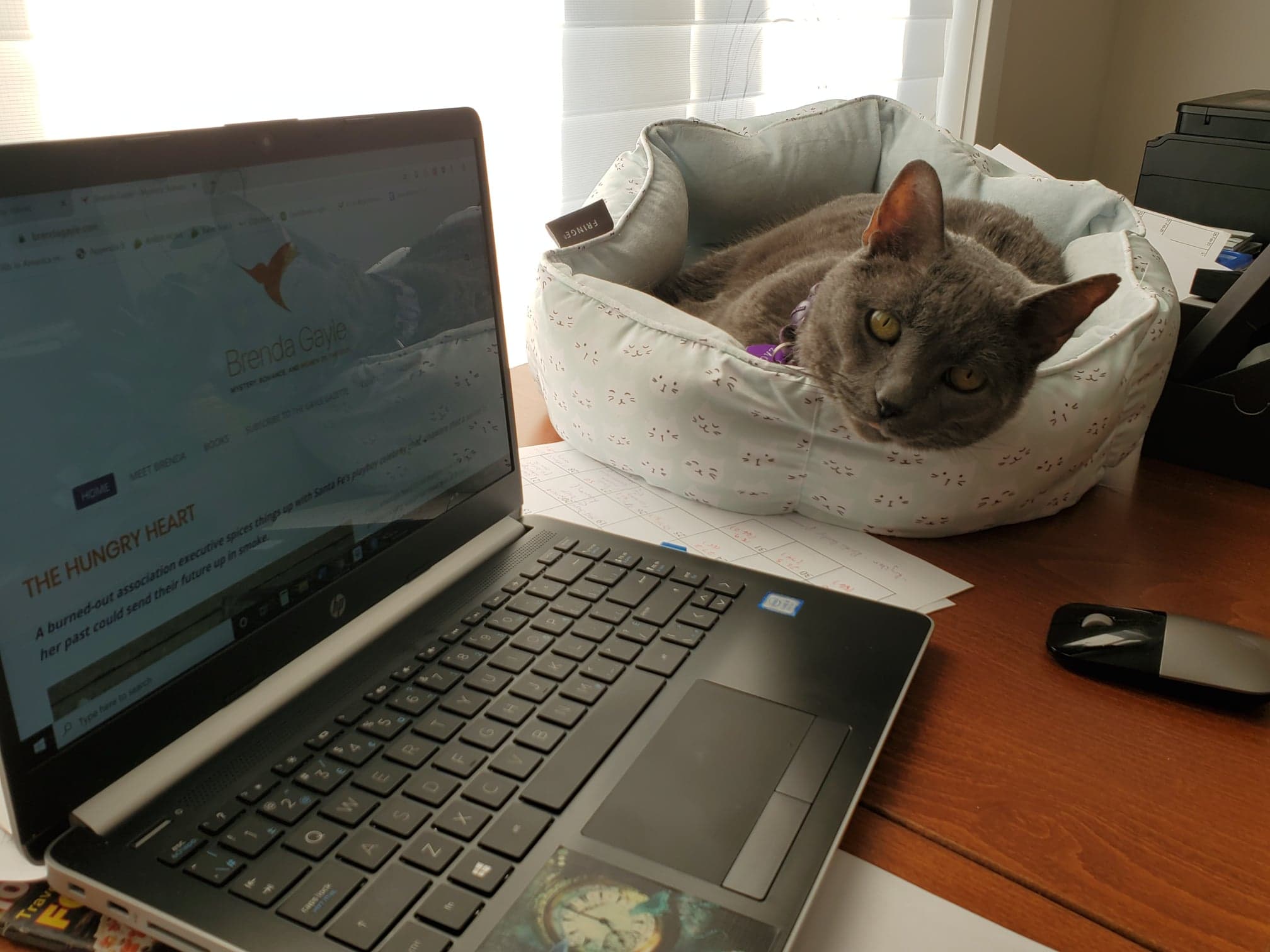
What are you working on right now?
I am currently plotting book 6 in the Charley Hall Mystery series and once I’ve figured out the who, what and how of it, I’ll start writing. In the meantime, I am continuing to work on a Great Depression-era women’s fiction novel I’ve been plodding away at for a few years.
Where can our readers discover more of your work or interact with you?
You can get information on all my books on my website at https://brendagayle.com/ & sign up for my newsletter, The Gayle Gazette https://landing.mailerlite.com/webforms/landing/z5q7v8 to keep up to date on new releases, giveaways, and all sorts of shenanigans. I’m also on Facebook https://www.facebook.com/brendagaylebooks

